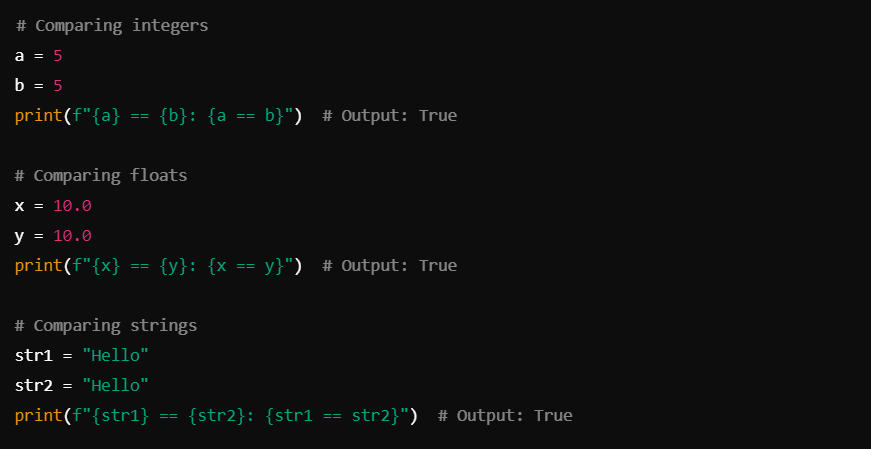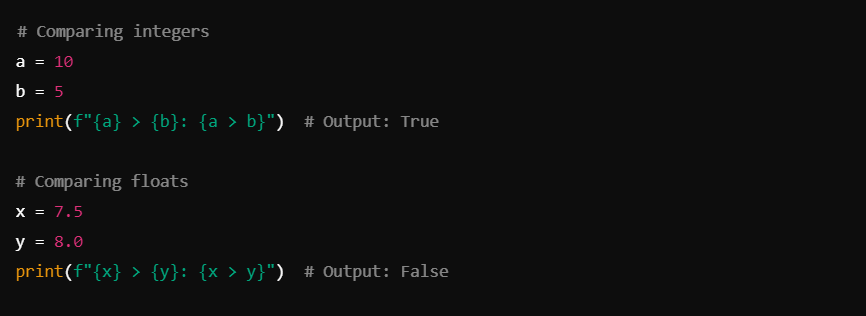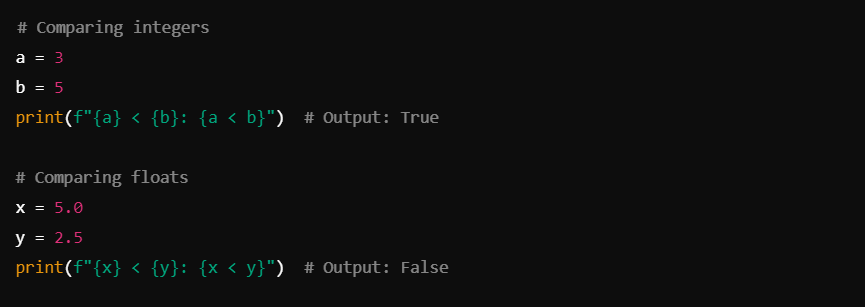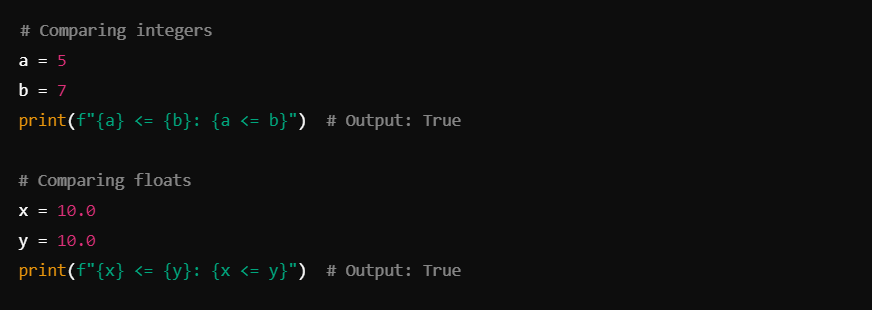Riven
Riven
python comparison operators
Python supports several comparison operators:
- Equal to (
==) - Not equal to (
!=) - Greater than (
>) - Less than (
<) - Greater than or equal to (
>=) - Less than or equal to (
<=)
Let’s explore each operator in detail, along with examples, use cases, and nuances.
1. Equal to (==)
The equal to operator checks if two values are the same. If they are, it returns True; otherwise, it returns False.
Example:

2. Not equal to (!=)
The not equal to operator checks if two values are different. If they are different, it returns True; otherwise, it returns False.
Example:

3. Greater than (>)
The greater than operator checks if the left value is greater than the right value. If it is, it returns True; otherwise, it returns False.
Example:

4. Less than (<)
The less than operator checks if the left value is less than the right value. If it is, it returns True; otherwise, it returns False.
Example:

5. Greater than or equal to (>=)
The greater than or equal to operator checks if the left value is greater than or equal to the right value. If it is, it returns True; otherwise, it returns False.
Example:

6. Less than or equal to (<=)
The less than or equal to operator checks if the left value is less than or equal to the right value. If it is, it returns True; otherwise, it returns False.
Example:
